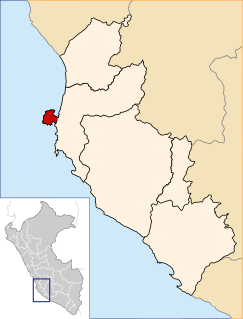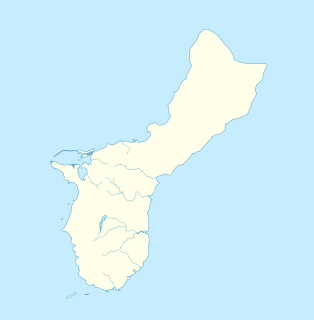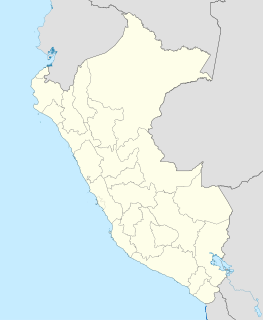
San Pablo Bay is a tidal estuary that forms the northern extension of San Francisco Bay in the East Bay and North Bay regions of the San Francisco Bay Area in northern California.

Pisco is a city located in the Department of Ica of Peru, the capital of the Pisco Province. The city is around 9 metres above sea level. Pisco was founded in 1640, close to the indigenous emplacement of the same name. Pisco originally prospered because of its nearby vineyards and became noted for its grape brandy or pisco which was exported from its port. Pisco has an estimated population of 104,656.

Ica is a department and region of Peru. It borders the Pacific Ocean on the west; the Lima Region on the north; the Huancavelica and Ayacucho regions on the east; and the Arequipa Region on the south. Its capital is the city of Ica.

Ica is a city and the capital of the Department of Ica in southern Peru. While the area was long inhabited by varying cultures of indigenous peoples, the Spanish conquistador Jerónimo Luis de Cabrera claimed its founding in 1563.

The Peruvian diving petrel is a small seabird that feeds in offshore waters in the Humboldt Current off Peru and Chile. Like the rest of the diving petrels it is a nondescript bird, with a dark back and pale belly, and blue feet, and can be separated from the rest of its family only by differences in its beak and nostrils. Unlike the common diving petrel and the South Georgia diving petrel it feeds in cold, offshore, often pelagic water, obtaining small fish larvae and planktonic crustaceans by pursuit diving. The main part of his food is made up by plankton organisms (85.3-91.1%). The remaining percentage of the Peruvian diving petrel's food is fish, mainly anchovies. Peruvian diving petrels can dive up to 83 metres (270 ft) deep but the average depth was recorded at around 30 metres (100 ft). It was long thought that the Peruvian diving petrel was rather bad in flying. However, great numbers of birds have been observed fishing regularly in the area between Asia Island and Pachacamac Island at a distance of 150-200 kilometres north of their Peruvian breeding grounds.

The Paracas culture was an Andean society existing between approximately 800 BCE and 100 BCE, with an extensive knowledge of irrigation and water management and that made significant contributions in the textile arts. It was located in what today is the Ica Region of Peru. Most information about the lives of the Paracas people comes from excavations at the large seaside Paracas site on the Paracas Peninsula, first formally investigated in the 1920s by Peruvian archaeologist Julio Tello.

Pisco is a province of the Ica Region in Peru. Its capital is the town of Pisco, where the popular liquor of the same name originated.

The Paracas Peninsula is a desert peninsula within the boundaries of the Paracas National Reserve, a marine reserve that extends south along the coast of Peru. The only marine reserve in the country, it is a designated UNESCO World Heritage Site. This is to mark and preserve the archeological sites of the Paracas culture, in addition to the marine habitat.

43°04′01″N70°52′07″W

Paracas National Reserve is a protected area located in the region of Ica, Peru and protects desert and marine ecosystems for their conservation and sustainable use. There are also archaeological remains of the Paracas culture inside the reserve.

The Papahānaumokuākea Marine National Monument is a World Heritage listed U.S. National Monument encompassing 583,000 square miles (1,510,000 km2) of ocean waters, including ten islands and atolls of the Northwestern Hawaiian Islands. Created in June 2006 with 140,000 square miles (360,000 km2), it was expanded in August 2016 by moving its border to the limit of the exclusive economic zone, making it one of the world's largest protected areas. It is internationally known for its cultural and natural values as follows:
The area has deep cosmological and traditional significance for living Native Hawaiian culture, as an ancestral environment, as an embodiment of the Hawaiian concept of kinship between people and the natural world, and as the place where it is believed that life originates and to where the spirits return after death. On two of the islands, Nihoa and Mokumanamana, there are archaeological remains relating to pre-European settlement and use. Much of the monument is made up of pelagic and deepwater habitats, with notable features such as seamounts and submerged banks, extensive coral reefs and lagoons.

Tumon Bay is a bay in the United States territory of Guam, opening to the Philippine Sea. It is bounded to the north by Two Lovers Point and to the south by Ypao Point. The entirety of the bay falls within the Tumon Bay Marine Preserve, also known as the Tumon Bay Marine Preserve Area (MPA) and Tumon Preserve, one of five marine preserves on Guam. The Preserve measures 4.54 square kilometers and is roughly two miles long. The platform of the fringing reef that separates the open ocean from the lagoon is up to 1,450 feet (440 m) wide. and up to one mile from the shore. The bay is located off of the Tumon area, the tourist center of the island, in the village of Tamuning. The bay is extensively utilized for recreation and fishing.

Macrocystis pyrifera, commonly known as giant kelp or bladder kelp, is a species of kelp, and one of four species in the genus Macrocystis. Despite its appearance, it is not a plant; it is a heterokont. Giant kelp is common along the coast of the northeastern Pacific Ocean, from Baja California north to southeast Alaska, and is also found in the southern oceans near South America, South Africa, Australia, and New Zealand. Individual algae may grow to more than 45 metres long at a rate of as much as 60 cm (2 ft) per day. Giant kelp grows in dense stands known as kelp forests, which are home to many marine animals that depend on the algae for food or shelter. The primary commercial product obtained from giant kelp is alginate, but humans also harvest this species on a limited basis for use directly as food, as it is rich in iodine, potassium, and other minerals. It can be used in cooking in many of the ways other sea vegetables are used, and particularly serves to add flavor to bean dishes.

The Paracas Candelabra, also called the Candelabra of the Andes, is a well-known prehistoric geoglyph found on the northern face of the Paracas Peninsula at Pisco Bay in Peru. Pottery found nearby has been radio carbon dated to 200 BCE, the time of the Paracas culture. The design is cut two feet (0.61 m) into the soil, with stones possibly from a later date placed around it. The figure is 595 feet tall, large enough to be seen 12 miles (19.3 km) at sea.

Hotel Paracas, part of The Luxury Collection, is a five star luxury hotel and resort located near Pisco, Peru, 240 kilometres south of Lima. The hotel was established in 1944 by Emilio Guimoye and is a luxury resort surrounded by desert at Paracas Bay on the Pacific coast. It has 120 rooms, two pools, a lounge bar, three restaurants and a spa.

Paracas is the capital of the Paracas District in the Ica Region in Peru. A small port town catering to tourism, Paracas serves as the jumping point for tours to Islas Ballestas and to Paracas National Reserve. The Paracas Bay, protected by Paracas Peninsula, gives these shallow, warmer waters a break from ocean waves, permitting life to flourish, particularly near its southwestern edge encompassed within the Paracas National Reserve. The Museo Julio C. Tello, also found just near the southwestern edge of Paracas Bay, provides information about Paracas culture and the many unique species, particularly birds, inhabiting the area. Paracas lies in a windy area where strong air currents carry sand, hence the town's name "Paracas", from Quechua: para (rain) and aco (sand).

San Gallán Island, also known as Sangayán Island, is a Peruvian island located in the Pacific Ocean, 5,2 km west off Paracas Peninsula, separated from it by El Boquerón strait. The island lies within Paracas District, Pisco Province, region of Ica; and is also part of Paracas National Reserve.

The Hluleka Marine Protected Area is an inshore conservation region in the territorial waters of the Eastern Cape province of South Africa

The Sardinia Bay Marine Protected Area is an inshore conservation region in the territorial waters of the Eastern Cape province, South Africa

The Walker Bay Whale Sanctuary Marine Protected Area is an inshore conservation region in the territorial waters of South Africa in the Western Cape province between Hermanus and Gansbaai















